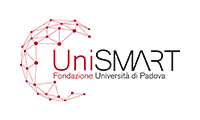Open Innovation concept – The TPC lesson for StepUP

“Open Innovation is a noble principle, but in real life it is a utopia”.
This could be a common reaction to the Open Innovation concept, especially in conservative environment such as the construction industry.
But what is exactly “Open Innovation”?
The definition was given for the first time by the American economist Henry Chesbrough in 2003:
“A paradigm that assumes that firms can and should use external ideas as well as internal ideas, and internal and external paths to market, as the firms look to advance their technology”[1].
To understand why this concept is to be seen as a disruptive approach, it must be seen against its counterpart: the “Closed Innovation” approach, which has been a paradigm of the traditional innovation model, based on the principle that innovation was a key driver for gaining a competitive advantage against the competitors on the market. For that reason, innovation needed to be protected and kept within the boundaries of the owner. In this light, for what concerns innovation processes, companies became self-sufficient, and inwards oriented.
By contrast, the Open Innovation concept goes beyond company boundaries, as it leverages on horizontal collaborations from a supply chain perspective and on external collaborations with research institutions and universities. Also, Open Innovation embraces (and benefits from) an interdisciplinary approach, getting inspiration from state-of-the-art technologies and adapting them to the specific company’s business model. As a result, the value proposition is a synthesis of internal and external know-how, and it is not based only on the deployment of internal network and capabilities. In this way, companies of any size – not just big players – may gain access to innovative markets thanks to the support of external competencies.
To understand how and why the Open Innovation concept found its way in the current market scenario, we need to focus on specific factors that emerged in the last 20-30 years:
- Increasing capability and increased number of external suppliers, with a supply chain perspective;
- Greater availability and mobility of skilled workers;
- Increasing ability of universities and research centres to build fruitful relationships with the industry sector and the market in general;
- Venture capitalists willing to invest in flexible contexts, with cross-sectoral approach.
That said, neither of the two approaches has so far prevailed over the other, as they both present pros and cons in the current scenario.
[1] Chesbrough, Henry William (1 March 2003). Open Innovation: The new imperative for creating and profiting from technology. Boston: Harvard Business School Press.
So how is the StepUP project dealing with innovation?
Looking at the great picture, what characterizes the StepUP implementation is a multifaceted scenario: P&P innovative solutions, a disruptive renovation methodology, innovative financial instruments, real world validations and third-party products integration. In this light, it is possible to recognise that the project is implementing a sort of a hybrid approach to innovation: on one hand, some of the StepUP’s solutions rely on companies’ internal know how. On the other, the collaborative nature of the project and the integration of third-party technologies reflect some of the key concepts of the Open Innovation approach.
Moreover, one of the key aspects of the StepUP project is the implementation of the Technology Provider Clusters concept (TPCs), based on the active involvement of external stakeholders into project development and on the generation of feedback loops for validation, integration and market uptake purposes. Doesn’t this sound as Open Innovation?
Daniel Fasnacht[1] defines this approach and concept as “value constellation”, based on the innovative know how generated by a network of multiple actors – exceeding enterprise boundaries – combined with companies’ expertise and value chain, creating “Open Innovation Ecosystems”.
Citing again Chesbrough[2],
“Useful knowledge these days is widely diffused. No one has a monopoly on knowledge […]. When useful knowledge exists in companies of all sizes and also in universities, non-profits and individual minds, it makes sense to orient your innovation efforts to accessing, building upon and integrating that external knowledge into useful products and services”
That is what StepUP is actually doing, leveraging on innovative and already available technologies to generate disruptive solutions for making renovation of existing buildings affordable and reliable: not just utopia, then.
Interested in knowing more? Don’t miss further updates on project results!
[1] Fasnacht, Daniel (2018), “Open Innovation Ecosystems”, Creating New Value Constellations in the Financial Services, Management for Professionals, vol. 2, Springer, Cham, pp. 131–172, doi:10.1007/978-3-319-76394-1_5, ISBN 978-3-319-76393-4
[2] Chesbrough, H. 2003b. The era of open innovation. Sloan Management Review 44 (3): 35– 41.
About the authors
 UNISMART
UNISMART
Unismart is a foundation of the University of Padova in charge of managing the technology transfer and innovation consulting activities directed to public and private bodies. It focuses its activities in the provision of innovation and business support services in several market sectors.
References
1 Chesbrough, Henry William (1 March 2003). Open Innovation: The new imperative for creating and profiting from technology. Boston: Harvard Business School Press.
[2] Fasnacht, Daniel (2018), “Open Innovation Ecosystems”, Creating New Value Constellations in the Financial Services, Management for Professionals, vol. 2, Springer, Cham, pp. 131–172, doi:10.1007/978-3-319-76394-1_5, ISBN 978-3-319-76393-4
[3] Chesbrough, H. 2003b. The era of open innovation. Sloan Management Review 44 (3): 35– 41.
 This project has received funding from the European Union’s Horizon 2020 research and innovation programme under grant agreement no. 847053.
This project has received funding from the European Union’s Horizon 2020 research and innovation programme under grant agreement no. 847053.
This website reflects only the author’s views. The European Climate, Infrastructure and Environment Executive Agency is not responsible for any use that may be made of the information it contains.
